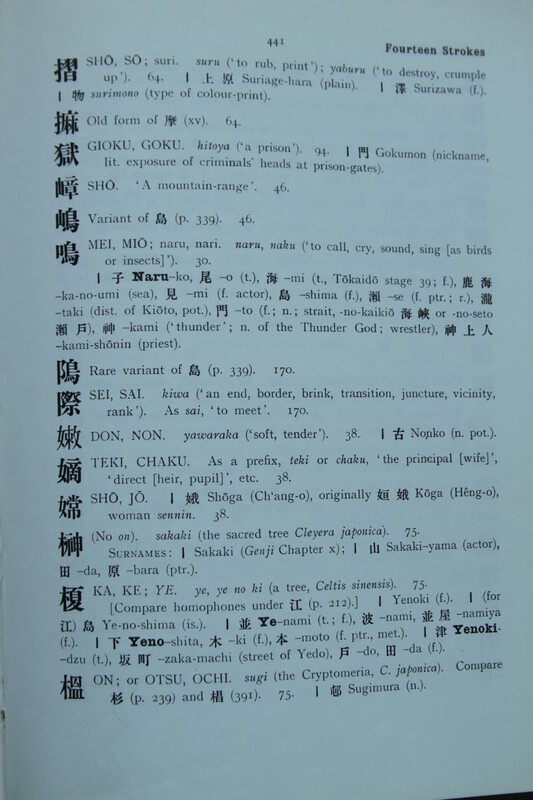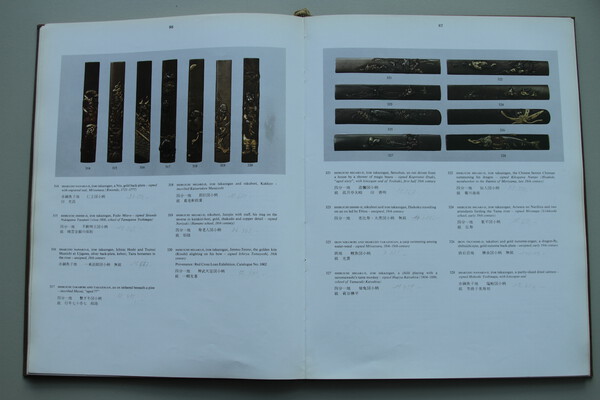
micha
Members-
Posts
178 -
Joined
-
Last visited
Profile Information
-
Location:
belgium
Profile Fields
-
Name
Michael
Recent Profile Visitors
The recent visitors block is disabled and is not being shown to other users.
micha's Achievements
-
New price : 'Early Japanese Sword Guards' , Sasano, 292 price : 120€ + shipping costs Micha
-
Hi, Please send PM if you're interested, following books are on hold for Joan 6 auction catalogues 1985, Christie's Shosankenshu, 'Joly's list of names and kakihan' catalog Hartmann Collection Japanese Names and how to read them Legend in Japanese Art Thanks, Micha
-
-
-
-
-
-
-
-
Shosankenshu, 'Joly's list of names and kakihan', 1963, Henri Joly price : 40€ + shipping costs Micha
-
-
Nioi and nie are the same thing, differing only in size. If it is too small to see the individual crystals with the eye, it is nioi. Using a loop makes nioi appear to be nie... I think Nie and Nioi are not the same at all. Here's my opinion (it's my personal opnion so read it critical please) Steel is an alloy of iron and carbon. The iron crystal structure does have dislocations (irregularity in the crystal form). This dislocations make iron flexible. Carbon prevent the movement of the dislocation in the iron ( and makes it harder, less flexible). When iron and carbon is hot enough, it 'melts' and becomes austentite. When austentite cools down it transforms into different structures (ferriet, martensite, cementite, bainite, .....). It's a rearrangement of the atomic structures. Nie is pure martensite, it requires a high tempature and a fast cool down. When the cool down is fast enough, carbon can not diffuse out of the austentite. Due to the high carbon, martensite will be much harder and britlle. When the cool down is not fast enough, carbon will diffuse and the austentite will becomes ferrite with cementite inclusions (softer, more flexible). Martensite is 'lens shaped' and the reflection of light will be less ('black'). The amount of carbon is important, the temperature is important, the cooldown is important, the dislocations are important, the amount of oxigen during the heating is important, ..... to form nie (martensite). If some of the 'needs/conditions' are not present, the atomic rearrangement will find another arrangement .......... -austentite -->much carbon (only exist at high temperature + 723°C, during the forging), the higher the temperature the higher the amount of carbon it can take (max 2% at 1147°C) when austentite cool down the atomic structures rearrange into --> -ferrite --> very low amount of carbon -pearlite --> when the heating temperature is around 727°C and the carbon 0,8%, austentite can transform to pearlite, this is a lamellar structure of ferrite and cementite. It's a very strong structure. -bainite -->is a similar structure than pearlite BUT the lamellae are much smaller than the wavelenght of light !! Therefore it lacks the pearlescent appearrance of pearlite ( is this utsuri ? ) -....... -cementite --> carbon that has left the austentite, it's an intermetallic compound that is hard and brittle like martensite BUT it's NOT the same When swords are made all these structures can emerge depending on (see above) Is Nie the same as Nioi --> I don't think so, it's not that easy, Nioi might include very small martensite but that's not enough to make it Nioi. It's important in what kind of crystal structure the particles are 'swimming' to make it nioi, utsuri, yubashiri, yo or whatever. Each different crystal form will reflect the light different and evry different kind of light (sun, artificial light, ...) will show a different reflection of the crystal structure. Micha
-
Hi, Does anyone has more information about this Enju Kuniyoshi (not the gendai smith) See http://www.samurai-nippon.net/V-1085/index.html Micha





































